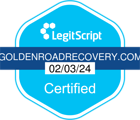⚠️Visitors to our site are often searching for information because they, their friend, or a family member has unfortunately fallen into use of dangerous substances. We aim to provide information like “Is Xanax a Downer”, but more importantly, we protect people from the dangers of substance abuse with medically assisted care! If you or a loved one is struggling, please call us for help, we can verify if your insurance qualifies for medically assisted care.⚠️
Don’t hesitate to call our admissions department at (855) 855-9593 or click the button below to get substance abuse help for yourself or a loved one.
Quitting Xanax on Your Own Has A High Chance Of Being Fatal
Leave Us A Form or Call Us Today To Speak To An Expert To Find Help!
At Golden Road Recovery, we see firsthand how substances like Xanax can quietly take hold of lives, turning moments of relief into cycles of dependence. If you’re reading this, perhaps you’re curious about Xanax’s effects or even recognizing patterns in your own life or a loved one’s. We’re here to break it down in a way that’s straightforward, empathetic, and aimed at empowering you to take that first step toward healing. Let’s dive into whether Xanax is indeed a downer, explore its impacts, and discuss how our specialized care can guide you back to a brighter path.
Key Points
- Xanax, a widely prescribed benzodiazepine, acts as a powerful central nervous system depressant, earning its reputation as a “downer” that can sedate the mind and body but often leads to dangerous dependence and life-threatening withdrawal [1].
- Unlike “uppers” that energize and stimulate, downers like Xanax slow everything down, from breathing to decision-making, making them deceptive in their calming allure but hazardous when abused [5].
- Abuse of Xanax is alarmingly common, with millions prescribed annually, leading to tolerance where users need more to feel the same effects, spiraling into addiction that affects cognition, relationships, and even mortality rates [3].
- Withdrawal from Xanax isn’t just uncomfortable—it can be fatal, with risks like seizures and hallucinations underscoring why inpatient medically assisted detox is not just helpful, but essential for safe recovery [2].
- At Golden Road Recovery, our inpatient programs offer round-the-clock medical supervision, personalized therapy, and a supportive environment that turns the dangers of Xanax abuse into opportunities for lasting sobriety and renewed purpose.
What is Xanax?
Imagine a pill that’s meant to quiet the storm in your mind—that’s Xanax in a nutshell. Scientifically known as alprazolam, Xanax belongs to a class of medications called benzodiazepines. It’s a short-acting drug, meaning its effects kick in quickly but don’t linger as long as some of its counterparts. Doctors prescribe it primarily for anxiety disorders, panic attacks, and sometimes insomnia, because it enhances the activity of a neurotransmitter called GABA in the brain. This boost creates a calming effect, helping to reduce overwhelming feelings of worry or fear [1].
But here’s where it gets tricky: while Xanax can be a lifesaver for short-term use under medical supervision, it’s not without its shadows. As a Schedule IV controlled substance, it’s recognized for its potential for abuse and dependence [1]. At Golden Road Recovery, we’ve helped countless individuals who started with a legitimate prescription only to find themselves caught in a web of reliance. If this sounds familiar, know that you’re not alone, and there’s a way out.
Quitting Xanax on Your Own Has A High Chance Of Being Fatal
Leave Us A Form or Call Us Today To Speak To An Expert To Find Help!
What is a Downer?
Let’s keep it real—street lingo like “downer” might sound casual, but it packs a punch when describing how certain drugs affect your body. A downer, or depressant, is any substance that slows down the central nervous system (CNS). Think of your CNS as the command center for your thoughts, movements, and vital functions like breathing and heart rate. Downers dial everything back, creating a sense of relaxation, sedation, or even euphoria at first [5].
Common downers include alcohol, opioids, and yes, benzodiazepines like Xanax. They work by increasing inhibitory signals in the brain, which can feel like a welcome break from stress but often masks underlying issues [5]. The problem? This slowdown can impair judgment, coordination, and reaction times, leading to accidents or worse. If you’ve ever felt that heavy, foggy haze after taking something to “unwind,” that’s the downer effect in action. And trust us, at our facility, we’ve seen how chasing that calm can lead to a storm of addiction.
What is an Upper?
On the flip side of downers are uppers—stimulants that rev up your system like a shot of espresso on steroids. Uppers, such as cocaine, amphetamines, or even caffeine in high doses, increase alertness, energy, and heart rate by boosting neurotransmitters like dopamine and norepinephrine. They make you feel invincible, focused, and euphoric, but that high comes crashing down, often leaving anxiety or exhaustion in its wake [1].
Why mention uppers here? Because understanding the contrast helps highlight why Xanax falls squarely in the downer camp. While uppers push you into overdrive, downers pull you into a lull, and mixing the two can be a recipe for disaster, as the body struggles to balance the opposing forces [1]. If you’re juggling substances to manage highs and lows, it’s a sign that professional help could change everything—and that’s where we come in.
Learn more about Adderall Misuse Neurotoxicity
Is Xanax an Upper or Downer?
No beating around the bush: Xanax is unequivocally a downer. As a benzodiazepine, it depresses the CNS, leading to sedation, reduced anxiety, and muscle relaxation [4]. Unlike uppers that amp you up, Xanax slows brain activity, which is why it’s prescribed for conditions where overactivity—like panic—is the issue. But this classification isn’t just academic; it explains why Xanax can feel so soothing yet become so addictive.
In our experience at Golden Road Recovery, many clients arrive surprised by how a “helpful” pill turned into a crutch. The downer effect might start as relief, but it often evolves into dependence, where life without it feels unbearable. If you’re questioning your use, consider this your gentle nudge to reach out—recovery starts with acknowledgment.
Quitting Xanax on Your Own Has A High Chance Of Being Fatal
Leave Us A Form or Call Us Today To Speak To An Expert To Find Help!
Dangers of Downers
Downers might promise peace, but they deliver peril. The primary danger lies in their ability to suppress vital functions: breathing slows, heart rate drops, and reflexes dull [5]. Mix them with alcohol or other depressants, and the risk of overdose skyrockets, potentially leading to coma or death. Long-term, downers erode cognitive function, increase fall risks (especially in older adults), and foster dependence that rewires the brain.
We’ve witnessed the toll at our center—from blackouts to strained relationships. But the good news? Recognizing these dangers is the first step to reclaiming control. Don’t let downers drag you down; let’s lift you up together.
What Are Downers And Xanax Pills For?
Downers, including Xanax pills, are designed for therapeutic purposes: easing anxiety, inducing sleep, or managing seizures [3]. Xanax specifically targets panic and generalized anxiety disorders by calming hyperactive neural pathways. They’re not meant for everyday stress but for clinical needs under supervision.
Yet, off-label or recreational use turns these tools into traps. At Golden Road Recovery, we emphasize that while downers have a place in medicine, abuse overrides their benefits. If Xanax has shifted from helper to hindrance in your life, our team is ready to guide you back to balance.
Side Effects of Xanax
Xanax’s side effects can sneak up on you. Short-term, expect drowsiness, dizziness, dry mouth, and slurred speech [3]. More concerning are memory issues, confusion, and lowered blood pressure. Long-term use? Tolerance builds, meaning you need more for the same calm, alongside risks like depression or aggression.
These aren’t just annoyances—they signal deeper changes. We’ve helped clients navigate these fogs, emerging clearer and stronger. If side effects are disrupting your daily life, it’s time to explore safer paths.
Dangers of Xanax Abuse
Abuse amplifies Xanax’s risks exponentially. Overdose can cause respiratory failure, especially when combined with opioids [2]. Chronic abuse leads to cognitive decline, increased mortality (up to 4.6 times higher), and even cancer risks [3]. Injecting or snorting heightens infection chances, from hepatitis to limb loss.
The scariest part? Abuse often hides in plain sight, starting with “just one more pill.” At our facility, we uncover these patterns and replace them with healthy coping strategies. Your story doesn’t have to end in danger—let us help rewrite it.
Quitting Xanax on Your Own Has A High Chance Of Being Fatal
Leave Us A Form or Call Us Today To Speak To An Expert To Find Help!
How Common is Xanax
Xanax is ubiquitous, with prescriptions soaring from 2003 to 2015, particularly among women and older adults [3]. In the U.S., it’s one of the most prescribed psychotropics, leading to millions of emergency visits annually [2]. Misuse affects adolescents too, linked to delinquency and depression.
This commonality normalizes risk, but at Golden Road Recovery, we know better. If Xanax has become too common in your routine, breaking free is possible—and profoundly rewarding.
Symptoms of Xanax Withdrawal
Withdrawal from Xanax is no joke; it can be brutal and potentially fatal. Symptoms include anxiety, insomnia, seizures, hallucinations, tremors, and elevated heart rate [4]. Because Xanax is short-acting, withdrawal hits fast and hard, with risks like convulsions that demand medical intervention [5].
Abrupt stopping can lead to life-threatening complications, which is why detoxing alone is dangerous. We’ve seen the fear in clients’ eyes, but also the relief when supported safely.
How Golden Road Recovery Can Assist Anyone Abusing This Substance or Substances
At Golden Road Recovery, we’re more than a treatment center—we’re your partners in reclaiming life from Xanax or any substance abuse. Our compassionate team offers tailored plans, starting with a thorough assessment to understand your unique journey. We provide therapy to address root causes, like anxiety or trauma, while building skills for sober living.
Whether it’s Xanax alone or polydrug use, our holistic approach includes nutrition, exercise, and family involvement. Imagine waking up without the haze—that’s the freedom we help you achieve. Reach out today; your new chapter awaits.
Why Inpatient Medically Assisted Rehab at Golden Road Recovery is the Best Solution for Managing Addiction
When it comes to Xanax addiction, inpatient medically assisted rehab isn’t just an option—it’s the gold standard for safety and success. Withdrawal can be fatal, with seizures and delirium posing real threats, making supervised detox crucial [5]. Our inpatient program ensures 24/7 medical monitoring, using tapering protocols and medications to ease symptoms comfortably.
Beyond detox, we offer immersive therapy in a distraction-free environment, fostering deep healing. Studies show this approach reduces relapse risks, especially for benzodiazepines [3]. Why settle for less when our structured support can transform addiction into empowerment? It’s the best path because it prioritizes your life.
Quitting Xanax on Your Own Has A High Chance Of Being Fatal
Leave Us A Form or Call Us Today To Speak To An Expert To Find Help!
FAQs
Q: Can Xanax withdrawal really be fatal?
A: Yes, absolutely—sudden cessation can trigger seizures or other life-threatening issues. That’s why we recommend inpatient medically assisted detox at Golden Road Recovery for safe management [2].
Q: How do I know if I’m dependent on Xanax?
A: Signs include needing higher doses, withdrawal symptoms between uses, or using it beyond prescription. If this resonates, our team can assess and support you.
Q: What’s the difference between Xanax and other downers?
A: Xanax is a fast-acting benzodiazepine, quicker than long-acting ones like Valium, but all downers share CNS depression risks [5].
Q: Can Xanax abuse affect my memory long-term?
A: Definitely—chronic use links to cognitive decline and memory impairment. Recovery at our facility focuses on rebuilding these functions through targeted therapies [3].
Q: How long does Xanax stay in your system?
A: Typically 11-15 hours, but factors like metabolism vary. In treatment, we monitor this to ensure safe detox.
Sources
[1] Benzodiazepines Factsheet – https://www.dea.gov/factsheets/benzodiazepines
[2] Xanax | Student Health and Counseling Services – https://shcs.ucdavis.edu/health-topic/xanax
[3] Benzodiazepines – StatPearls – NCBI Bookshelf – https://www.ncbi.nlm.nih.gov/books/NBK470159
[4] Benzodiazepines: Uses, Dangers, and Clinical Considerations – PMC – https://pmc.ncbi.nlm.nih.gov/articles/PMC8629021
[5] Benzodiazepines – Alcohol and Drug Foundation – https://adf.org.au/drug-facts/benzodiazepines
Quitting Xanax on Your Own Has A High Chance Of Being Fatal
Leave Us A Form or Call Us Today To Speak To An Expert To Find Help!




